Back to Art & Object
 The Art of Spring: 10 Paintings to Mark the Season
The Art of Spring: 10 Paintings to Mark the Season
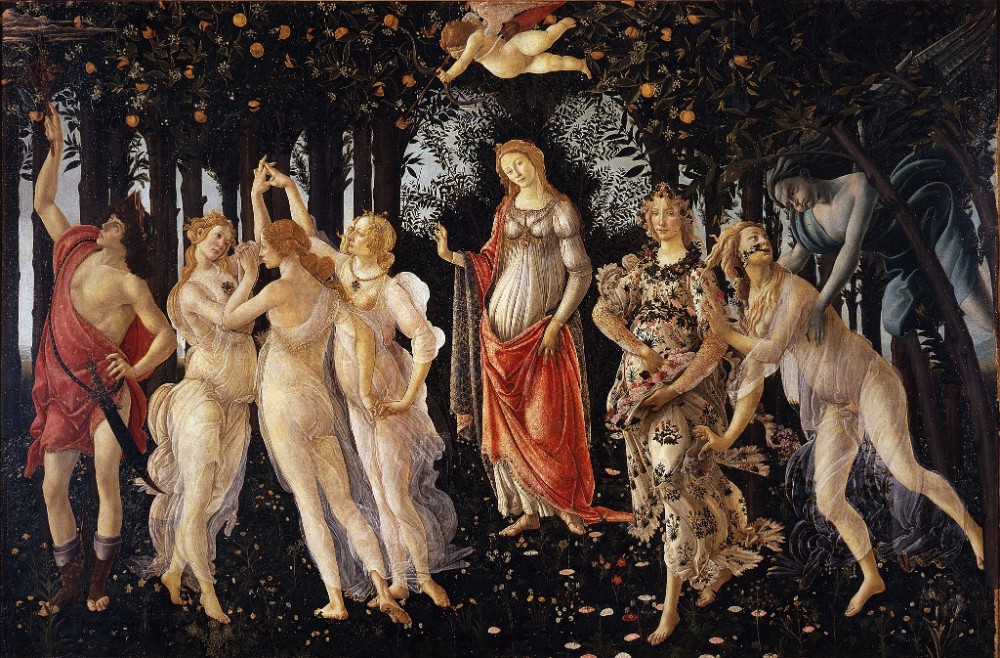
Primavera
- Artist Sandro Botticelli
- Date 1482
- Materials Tempera
- Dimensions Height: 34 inches
Primavera, also known as the Allegory of Spring (1482), by the Italian Renaissance painter Sandro Botticelli (1445-1510) features Venus, the goddess of love, at the center, with Flora, the goddess of flowers, on the right. Crammed with mythological figures that include Zephyrus, the nymph Chloris, Cupid, the Three Graces, and Mercury, this is one of the most widely discussed and analyzed paintings in all of art history.
Photo Courtesy : wikimedia commons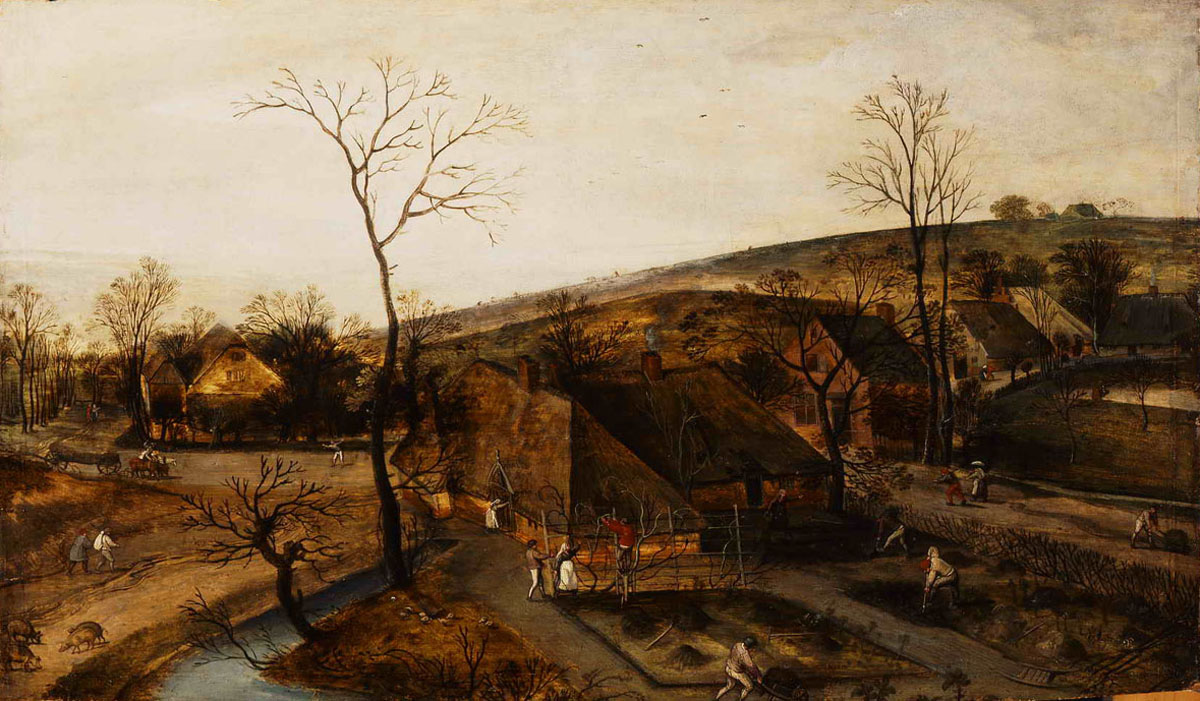
Spring
- Artist Jacob Grimmer
- Date c. 1550-90
- Materials Oil on wood panel
- Dimensions Height: 34 inches
The work of Flemish landscape painter Jacob Grimmer (1525-1590) might be confused with another Netherlandish artist, Pieter Brueghel the Elder. However, Grimmer broke away from Brueghel and practiced a more naturalistic form of painting, returning frequently to the four seasons and the twelve months of the year as subject matter. Grimmer captures Spring (1550-1590) very early in the season, just when the snow is gone but before any green shoots or blossoms begin to appear.
Photo Courtesy : wikimedia commons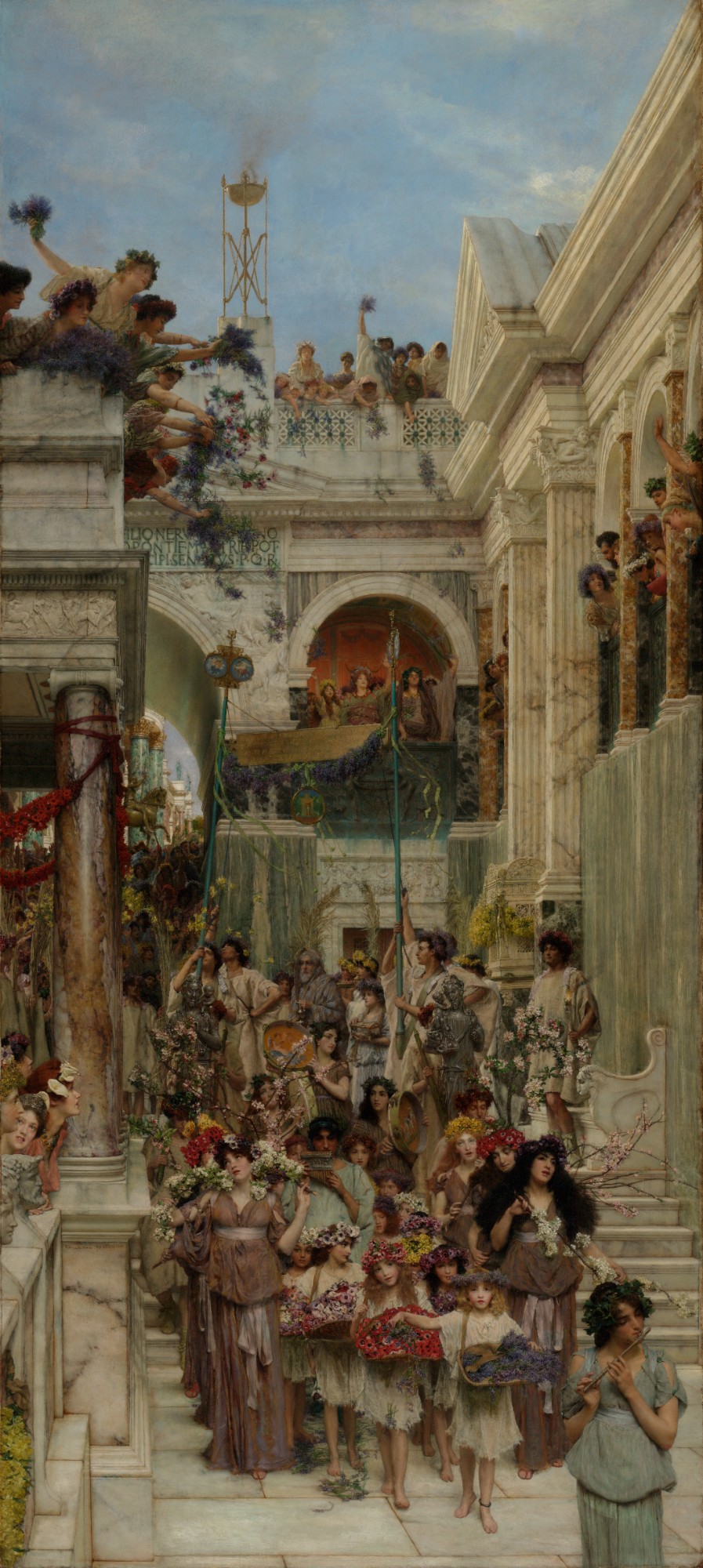
Spring
- Artist Lawrence Alma-Tadema
- Date 1894
- Materials Oil on canvas
- Dimensions Height: 34 inches
The people of Italy, one of the countries hit hardest by the COVID-19 crisis, may take solace in remembering better days, like the one depicted in Spring (1894), one of the most popular paintings by the Dutch artist Lawrence Alma-Tadema (1836-1912). Best known for his works depicting antiquity, Tadema relied on his friends and relatives as models for crowds of joyful people, jostling each other on a flower-strewn street in Rome celebrating Cerealia, a festival for Ceres the ancient Roman Goddess of grain.
Photo Courtesy : wikimedia commons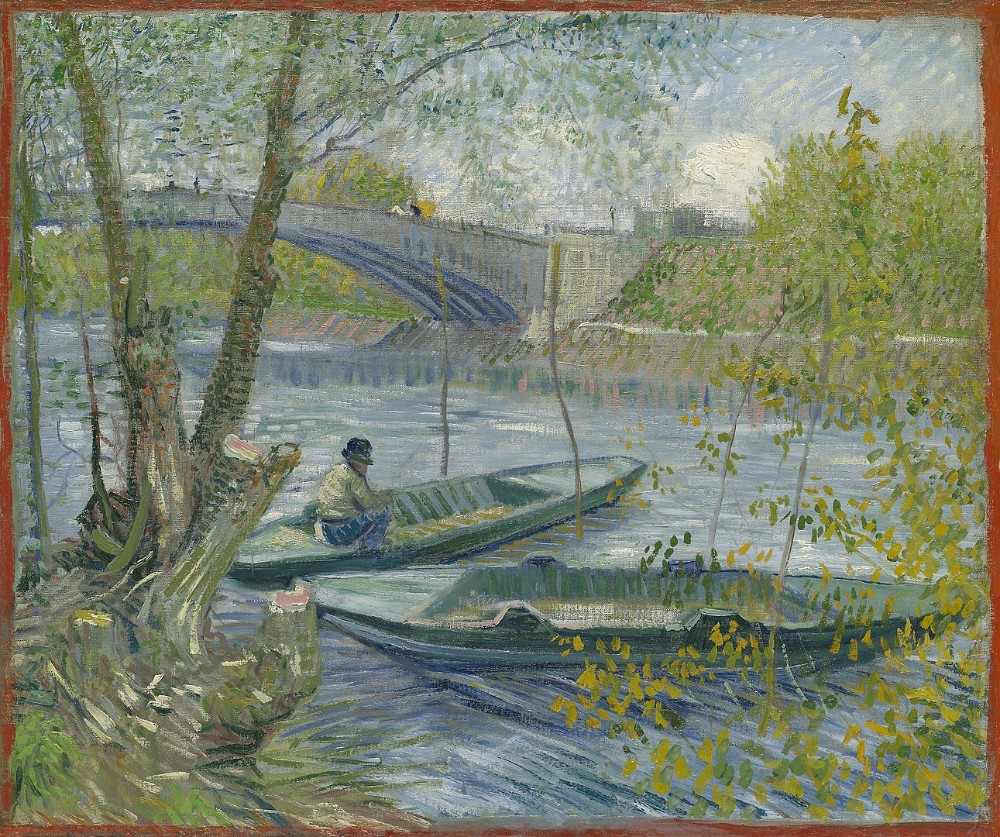
Fishing in Spring, the Pont de Clichy (Asnières)
- Artist Vincent van Gogh
- Date 1887
- Materials Oil on canvas
- Dimensions Height: 34 inches
We associate Van Gogh (1853-1890) with his paintings of sunflowers executed in the vibrant colors of summer, but he also painted cool, airy, moments, like the one in Fishing in Spring, the Pont de Clichy (Asnières) (1887). Fishermen are early harbingers of spring, taking their boats out on the water as soon as the ice melts. Van Gogh painted this scene on the Seine where he often worked with his friend the neo-impressionist painter Paul Signac (1863-1935).
Photo Courtesy : wikimedia commons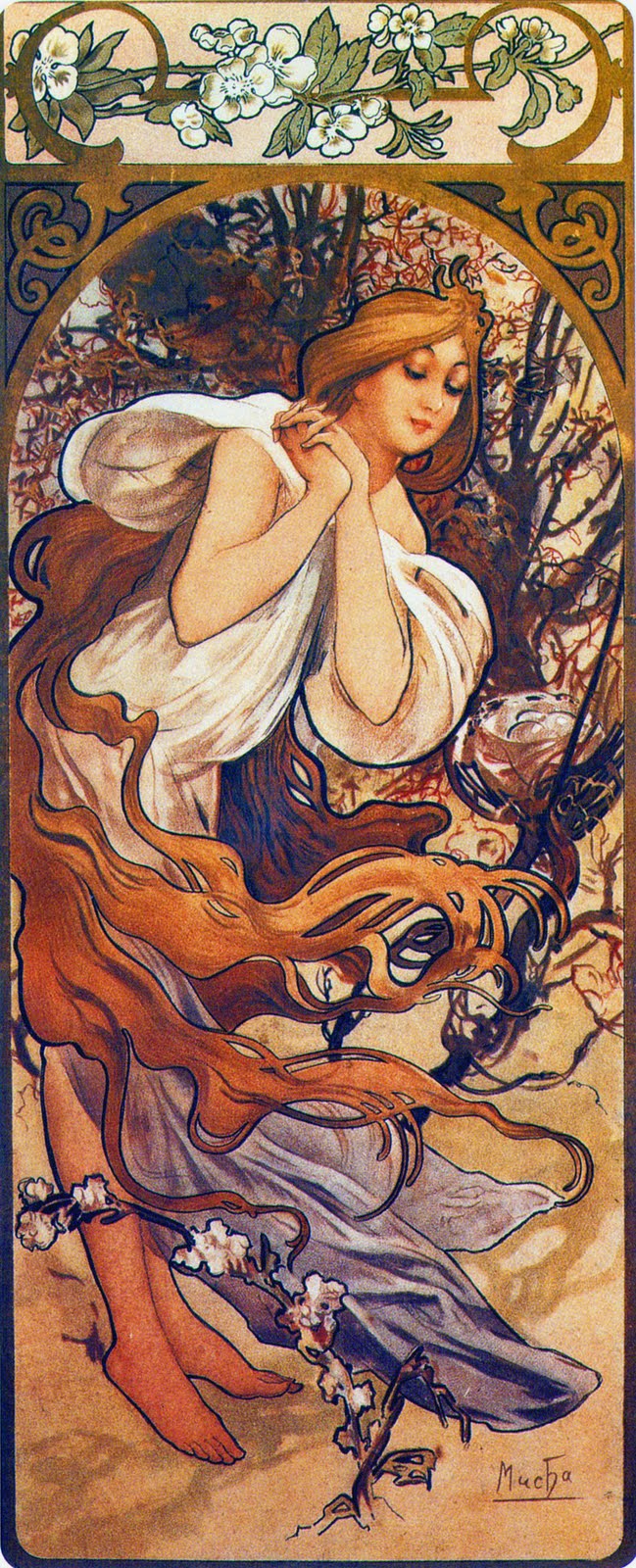
Spring
- Artist Alphonse Mucha
- Date 1897
- Dimensions Height: 34 inches
The Czech Art Nouveau painter Alphonse Maria Mucha (1860-1938) worked in decorative arts and theater design as well as portrait painting. His distinctive graphic style was popularized in theater posters and he shared a studio for a time with Paul Gaugin. Spring (1897), one of Mucha’s posters featuring the four seasons, typically shows his preference for beautiful, barefoot young women whose flowing hair mimics the flowers and vines that encircle them.
Photo Courtesy : wikimedia commons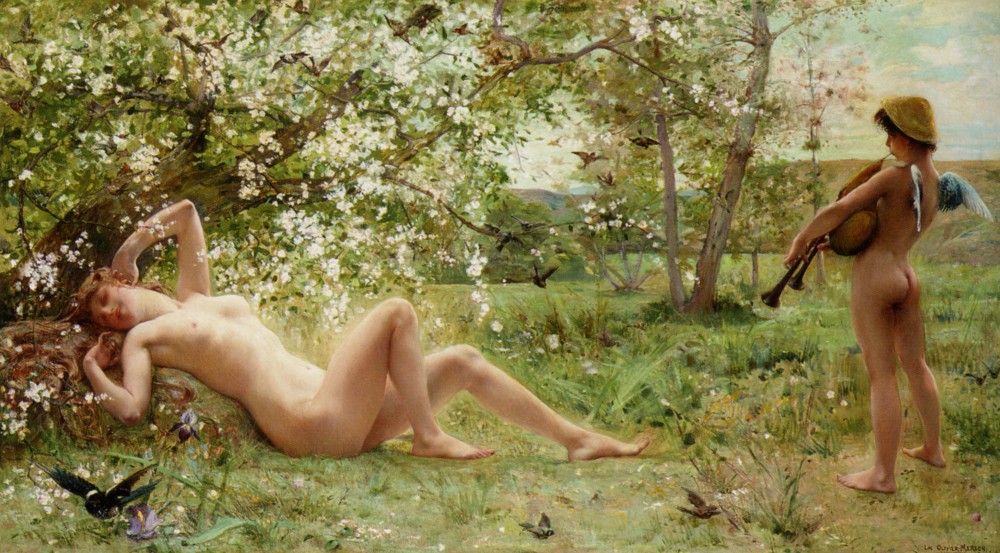
Awakening Spring
- Artist Luc-Olivier Merson
- Date before 1884
- Materials Oil on canvas
- Dimensions Height: 34 inches
The late 19th century was a hotbed for allegorical paintings of spring featuring naked, nubile, young women whose sexuality was awakening, bursting forth along with delicate green shoots and cherry blossoms. French artist and illustrator Luc-Oliver Merson (1846-1920) painted several versions of the theme seen in Awakening Spring from 1884. Popular in his own time, Merson was awarded a Prix de Rome in 1869, though his work has largely been forgotten.
Photo Courtesy : wikimedia commons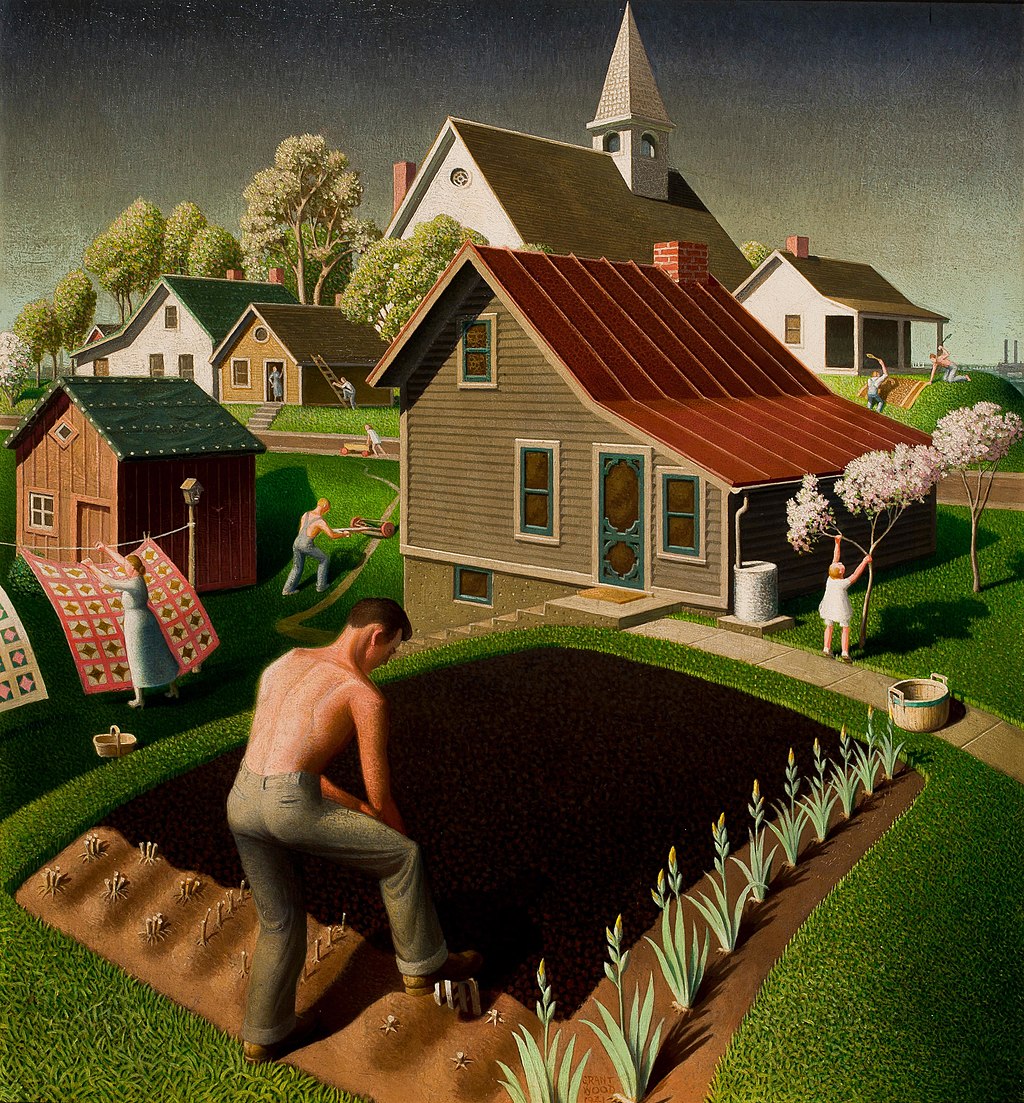
Spring in Town
- Artist Grant Wood
- Date 1941
- Materials Oil on wood panel
- Dimensions Height: 34 inches
Not all artist’s thoughts of spring turn to sex. Spring in Town (1941), by Regionalist painter Grant Wood (1891-1942), demonstrates a less sensual approach to the season through gendered images of labor as men and women move from indoors to outside in small-town America. Best known for his stark double portrait, American Gothic (1930), Wood’s iconic representation of a farmer and his daughter has become one of the most parodied paintings in art of the 20th century.
Photo Courtesy : wikimedia commons
Springtime Landscape
- Artist Béla Iványl-Grünwald
- Date c. 1910
- Materials Oil on paper
- Dimensions Height: 34 inches
Hungarian painter Béla Iványl-Grünwald (1867-1940) was a modernist who focused on painting en plein air but whose mature work, such as that seen in Springtime Landscape (1910) boasts the vibrant color typical of the Fauves. Although influenced by the work of French Post-Impressionist Paul Gaugin, Iványl-Grünwald spent most of his life living and exhibiting his work in Hungry.
Photo Courtesy : wikimedia commons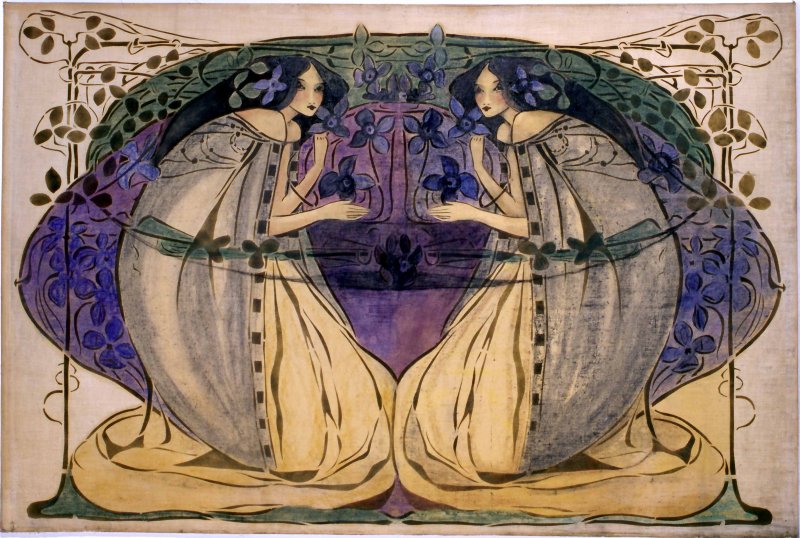
Spring
- Artist Frances Macdonald Macnair
- Date c. 1900-05
- Materials Watercolor on linen
- Dimensions Height: 34 inches
Frances Macdonald Macnair (1873-1921) was a prominent artist in Glasgow, Scotland, along with her sister, artist-designer Margaret Macdonald Macintosh. The influence of the Symbolist William Blake can be seen in Macnair’s mystical painting of Spring. Together the sisters exhibited a variety of artistic work across Europe including embroidery, metalwork, and watercolors, but Frances’ achievements are not well-known as her husband destroyed much of her work after her death.
Photo Courtesy : wikimedia commons
Spring Grass
- Artist Alma Thomas
- Date 1973
- Materials Acrylic on canvas
- Dimensions Height: 34 inches
Alma Thomas (1891-1978) was a Columbia and Howard University-educated African-American Abstract-Expressionist painter whose work was underappreciated until 1972, when, at the age of 81, she was the first African-American woman to have a solo exhibition at the Whitney Museum of American Art. Thomas was also the first African-American woman to have artwork displayed at the White House and acquired for their permanent collection during the Obama administration. Her color-saturated painting Spring Grass (1973) in her typical late style vibrates with new growth.
Photo Courtesy : smithsonian american art museum
Primavera
- Artist Sandro Botticelli
- Date 1482
- Materials Tempera
- Dimensions Height: 34 inches
Primavera, also known as the Allegory of Spring (1482), by the Italian Renaissance painter Sandro Botticelli (1445-1510) features Venus, the goddess of love, at the center, with Flora, the goddess of flowers, on the right. Crammed with mythological figures that include Zephyrus, the nymph Chloris, Cupid, the Three Graces, and Mercury, this is one of the most widely discussed and analyzed paintings in all of art history.
Photo Courtsey of wikimedia commons
Spring
- Artist Jacob Grimmer
- Date c. 1550-90
- Materials Oil on wood panel
- Dimensions Height: 34 inches
The work of Flemish landscape painter Jacob Grimmer (1525-1590) might be confused with another Netherlandish artist, Pieter Brueghel the Elder. However, Grimmer broke away from Brueghel and practiced a more naturalistic form of painting, returning frequently to the four seasons and the twelve months of the year as subject matter. Grimmer captures Spring (1550-1590) very early in the season, just when the snow is gone but before any green shoots or blossoms begin to appear.
Photo Courtsey of wikimedia commons
Spring
- Artist Lawrence Alma-Tadema
- Date 1894
- Materials Oil on canvas
- Dimensions Height: 34 inches
The people of Italy, one of the countries hit hardest by the COVID-19 crisis, may take solace in remembering better days, like the one depicted in Spring (1894), one of the most popular paintings by the Dutch artist Lawrence Alma-Tadema (1836-1912). Best known for his works depicting antiquity, Tadema relied on his friends and relatives as models for crowds of joyful people, jostling each other on a flower-strewn street in Rome celebrating Cerealia, a festival for Ceres the ancient Roman Goddess of grain.
Photo Courtsey of wikimedia commons
Fishing in Spring, the Pont de Clichy (Asnières)
- Artist Vincent van Gogh
- Date 1887
- Materials Oil on canvas
- Dimensions Height: 34 inches
We associate Van Gogh (1853-1890) with his paintings of sunflowers executed in the vibrant colors of summer, but he also painted cool, airy, moments, like the one in Fishing in Spring, the Pont de Clichy (Asnières) (1887). Fishermen are early harbingers of spring, taking their boats out on the water as soon as the ice melts. Van Gogh painted this scene on the Seine where he often worked with his friend the neo-impressionist painter Paul Signac (1863-1935).
Photo Courtsey of wikimedia commons
Spring
- Artist Alphonse Mucha
- Date 1897
- Dimensions Height: 34 inches
The Czech Art Nouveau painter Alphonse Maria Mucha (1860-1938) worked in decorative arts and theater design as well as portrait painting. His distinctive graphic style was popularized in theater posters and he shared a studio for a time with Paul Gaugin. Spring (1897), one of Mucha’s posters featuring the four seasons, typically shows his preference for beautiful, barefoot young women whose flowing hair mimics the flowers and vines that encircle them.
Photo Courtsey of wikimedia commons
Awakening Spring
- Artist Luc-Olivier Merson
- Date before 1884
- Materials Oil on canvas
- Dimensions Height: 34 inches
The late 19th century was a hotbed for allegorical paintings of spring featuring naked, nubile, young women whose sexuality was awakening, bursting forth along with delicate green shoots and cherry blossoms. French artist and illustrator Luc-Oliver Merson (1846-1920) painted several versions of the theme seen in Awakening Spring from 1884. Popular in his own time, Merson was awarded a Prix de Rome in 1869, though his work has largely been forgotten.
Photo Courtsey of wikimedia commons
Spring in Town
- Artist Grant Wood
- Date 1941
- Materials Oil on wood panel
- Dimensions Height: 34 inches
Not all artist’s thoughts of spring turn to sex. Spring in Town (1941), by Regionalist painter Grant Wood (1891-1942), demonstrates a less sensual approach to the season through gendered images of labor as men and women move from indoors to outside in small-town America. Best known for his stark double portrait, American Gothic (1930), Wood’s iconic representation of a farmer and his daughter has become one of the most parodied paintings in art of the 20th century.
Photo Courtsey of wikimedia commons
Springtime Landscape
- Artist Béla Iványl-Grünwald
- Date c. 1910
- Materials Oil on paper
- Dimensions Height: 34 inches
Hungarian painter Béla Iványl-Grünwald (1867-1940) was a modernist who focused on painting en plein air but whose mature work, such as that seen in Springtime Landscape (1910) boasts the vibrant color typical of the Fauves. Although influenced by the work of French Post-Impressionist Paul Gaugin, Iványl-Grünwald spent most of his life living and exhibiting his work in Hungry.
Photo Courtsey of wikimedia commons
Spring
- Artist Frances Macdonald Macnair
- Date c. 1900-05
- Materials Watercolor on linen
- Dimensions Height: 34 inches
Frances Macdonald Macnair (1873-1921) was a prominent artist in Glasgow, Scotland, along with her sister, artist-designer Margaret Macdonald Macintosh. The influence of the Symbolist William Blake can be seen in Macnair’s mystical painting of Spring. Together the sisters exhibited a variety of artistic work across Europe including embroidery, metalwork, and watercolors, but Frances’ achievements are not well-known as her husband destroyed much of her work after her death.
Photo Courtsey of wikimedia commons
Spring Grass
- Artist Alma Thomas
- Date 1973
- Materials Acrylic on canvas
- Dimensions Height: 34 inches
Alma Thomas (1891-1978) was a Columbia and Howard University-educated African-American Abstract-Expressionist painter whose work was underappreciated until 1972, when, at the age of 81, she was the first African-American woman to have a solo exhibition at the Whitney Museum of American Art. Thomas was also the first African-American woman to have artwork displayed at the White House and acquired for their permanent collection during the Obama administration. Her color-saturated painting Spring Grass (1973) in her typical late style vibrates with new growth.
Photo Courtsey of smithsonian american art museum